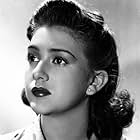Malvaloca is a good girl who goes wrong until she finds a good man that really loves her, yet her past marks her life.Malvaloca is a good girl who goes wrong until she finds a good man that really loves her, yet her past marks her life.Malvaloca is a good girl who goes wrong until she finds a good man that really loves her, yet her past marks her life.
Photos
Amparo Rivelles
- Malvaloca
- (as Amparito Rivelles)
Fernando Freyre de Andrade
- Jeromo
- (as Fernando Freire)
Rafaela Satorrés
- Hermana Piedad
- (as Rafaela Satorres)
María López Morante
- Teresona
- (as María López)
- Director
- Writers
- All cast & crew
- Production, box office & more at IMDbPro
Storyline
Did you know
- ConnectionsVersion of Malvaloca (1927)
Featured review
This is the second version of a stage play written by the Álvarez Quintero brothers. They were known for the local flavor and poetry with which they infused their works, often mixing drama and comedy. The idea came from a popular copla (short song) comparing a woman's redemption with a bell being recast("Merecía esta serrana / que la fundieran de nuevo / como funden las campanas"). As the authors said about this story, the characters don't know that they are becoming involved in a drama, so they act naturally as the story evolves. The original play was first staged in Madrid in April 6th. 1912 at the Teatro de la Princesa, its lead role played by famed actress María Guerrero. The first attempt at filming the story came in 1926, a silent version played by Lidia Gutiérrez, Manuel San Germán and Javier de Rivera. This version was restored and reviewed with live piano music at Málaga 2010 Film Festival, although some parts from the second act are missing. In this first version Malvaloca is a foolish girl and as a result of her ways soon a child is born (and no more to avoid spoilers).
Then in 1942 this second version was made. These were different times, under a military regime that condemned children outside the marriage, so the baby was plainly censored as the feminine star could "have a past" as long as it was not too evidently shown. The story begins with a young and not at all foolish but conscious Malvaloca, who complains of her beauty amidst her family passivity and a disfavored entourage where she is pushed by others into falling to bring home some food and money (although they don't seem at all famished). She becomes socially despised, yet none of her suitors are. One of them, Salvador (great as always Manuel Luna), runs away feeling he is liking her too much, yet they keep a certain friendship. So when he has an accident and must be attended at a convent she pays him a visit, and so she meets Leonardo, his forge business partner (top leading man Alfredo Mayo). He falls for her and is corresponded. But her past pursues her and jealousy and social prejudices menace their happiness. There is a strange honesty in some of the dialogs between the three of them, specially between Malvaloca and Salvador : "You are good... because you're not bad; he (Leonardo) is good.. because he is good". Simple and straight. Leonardo sees the goodness in her beyond her beauty and understands her disgrace. She changes her view on men and love, learns to read and tries to redeem herself. Yet he is jealous of her past intimacy with Salvador. While this goes on, the old nun's cracked tower bell is being re casted by the two men as a thanksgiving for Salvador's recovery. Then Leonardo's sister comes to visit him and the social prejudices dramatically reappear and will come to a climax during the Semana Santa religious procession, when the restored bell will be heard again. What will happen in the end?
One should keep in mind the circumstances under which this film was made : political dictatorship, morals of the times and a postwar mentality, in a traditional setting of an agricultural region like Andalusia, help understand why the characters act as they do, why for example Malvaloca never tries to get a job or overcome her luck, like maybe a prewar heroine would have done. After all, the original play dates from 1912, when this was even more evident.
And an anecdote to finish : Amparo ("Amparito") Rivelles was 17 when the picture was premiered, and Alfredo Mayo was 31. It was her fourth picture, while he was a consolidated leading man. They fell in love and became engaged. Then shortly before the wedding she canceled it. They both would made several more films together with great success. She would later leave Spain and become a single mother. No, she was not like Malvaloca at all.
Then in 1942 this second version was made. These were different times, under a military regime that condemned children outside the marriage, so the baby was plainly censored as the feminine star could "have a past" as long as it was not too evidently shown. The story begins with a young and not at all foolish but conscious Malvaloca, who complains of her beauty amidst her family passivity and a disfavored entourage where she is pushed by others into falling to bring home some food and money (although they don't seem at all famished). She becomes socially despised, yet none of her suitors are. One of them, Salvador (great as always Manuel Luna), runs away feeling he is liking her too much, yet they keep a certain friendship. So when he has an accident and must be attended at a convent she pays him a visit, and so she meets Leonardo, his forge business partner (top leading man Alfredo Mayo). He falls for her and is corresponded. But her past pursues her and jealousy and social prejudices menace their happiness. There is a strange honesty in some of the dialogs between the three of them, specially between Malvaloca and Salvador : "You are good... because you're not bad; he (Leonardo) is good.. because he is good". Simple and straight. Leonardo sees the goodness in her beyond her beauty and understands her disgrace. She changes her view on men and love, learns to read and tries to redeem herself. Yet he is jealous of her past intimacy with Salvador. While this goes on, the old nun's cracked tower bell is being re casted by the two men as a thanksgiving for Salvador's recovery. Then Leonardo's sister comes to visit him and the social prejudices dramatically reappear and will come to a climax during the Semana Santa religious procession, when the restored bell will be heard again. What will happen in the end?
One should keep in mind the circumstances under which this film was made : political dictatorship, morals of the times and a postwar mentality, in a traditional setting of an agricultural region like Andalusia, help understand why the characters act as they do, why for example Malvaloca never tries to get a job or overcome her luck, like maybe a prewar heroine would have done. After all, the original play dates from 1912, when this was even more evident.
And an anecdote to finish : Amparo ("Amparito") Rivelles was 17 when the picture was premiered, and Alfredo Mayo was 31. It was her fourth picture, while he was a consolidated leading man. They fell in love and became engaged. Then shortly before the wedding she canceled it. They both would made several more films together with great success. She would later leave Spain and become a single mother. No, she was not like Malvaloca at all.
Details
- Runtime1 hour 36 minutes
- Color
- Aspect ratio
- 1.37 : 1
Contribute to this page
Suggest an edit or add missing content


















